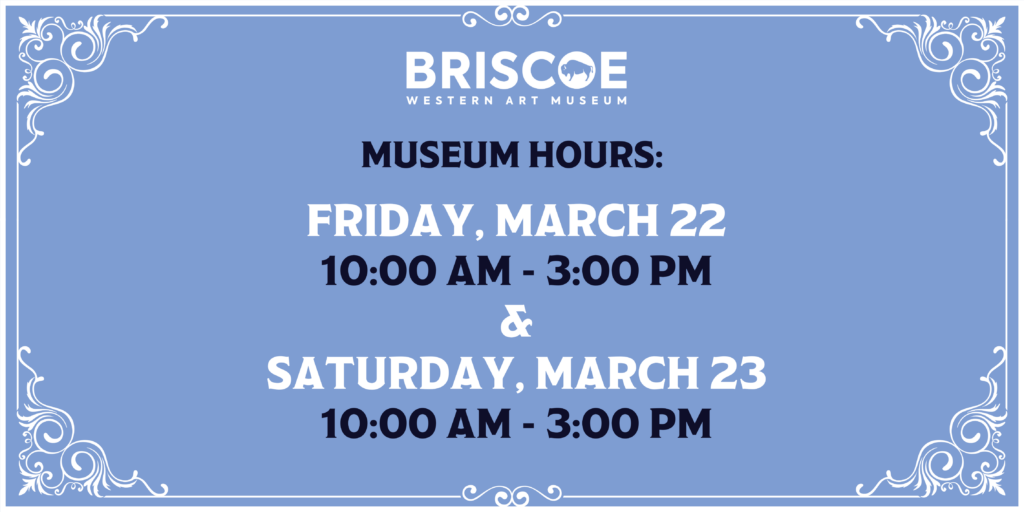Mezzanine Gallery
One of the most striking galleries in the Briscoe Western Art Museum, the Mezzanine offers spectacular views of the museum foyer, the San Antonio River Walk, and the American Southwest, the latter of which is the theme for this gallery. The works in the Mezzanine Gallery depict the Southwestern landscape, the Native peoples of the region, and prominent artists who shaped the genre in the twentieth and twenty-first centuries.
Long before it was “American” or “Southwestern,” the region comprised of Southern California, Arizona, New Mexico, Texas, Oklahoma, and parts of Colorado, Utah, and Nevada was an arid but spectacular landscape. The regional features include vast canyons, more than a mile deep, red-rock mesas and arches, and spectacular mountains with cactus growing at their bases and snow on their peaks. The region was home to Native peoples who had lived in there from time immemorial and “el norte” to the Spanish and Mexican settlers who built homes, missions, and ranches throughout the area. In fact, the region was not known as the Southwest until 1848, at the close of the Mexican-American War. Regardless of what flag flew in the region, the cultural roots that grew from the variety of people who came to live in the Southwest continued to grow and inspire artists in search of the sublime.
One of the most breathtaking pieces in the gallery is a piece by Curt Walters called Cimmerian Whispers. Walters, originally from New Mexico, first visited the Grand Canyon when he was nineteen and has made his work on the canyon and the preservation of the natural environment the focus of his career. Visitors, seeing his work for the first time, are visibly taken aback by the scale of the piece, as well as the minute details of the landscape.
As the visitors are drawn toward the Grand Canyon, on their right, they pass by three sculptures by some of the premier contemporary Native artists from the Southwest. A bronze and a pink Portuguese marble piece were created by two graduates of the Institute of American Indian Art of Santa Fe, New Mexico. The bronze titled Pueblo Potter by Allan Houser (Chiricahua Apache) and the marble titled Northern Plateau Women by Doug Hyde (Nez Perce/Assiniboine) evoke a sense of both the traditional and contemporary through the techniques these sculptors have used, as well as sense of regional identity. The same can be said of Oreland Joe, Sr. (Dine/Ute), whose Colorado alabaster sculpture Girl Who Walks in the Sun exudes grace and tranquility.
Exploring this gallery and its variety of works will surely give visitors a sense of the diversity that makes the Southwest such an engaging region. The famous artist Ernest Blumenschein once said of his first experience in Taos, New Mexico: “The month was September, and the fertile valley a beautiful sight, and inspiration for those who ply the brush for happiness…in a garden spot protected by mountains.”
This blog entry was written by our Curator of Collections, Ryan Badger. Ryan has been at the Briscoe for two years and his primary focus as Curator of Collections is bringing the stories of the Briscoe to life through the curation of the collection.
BECOME A MEMBER
Help us bring the spirit of the West alive by becoming a Briscoe Partner!
Click here to become a member!
SUPPORT THE MUSEUM
Governor Dolph Briscoe and his wife Janey envisioned a Museum that would preserve the stories and traditions of the American West.






